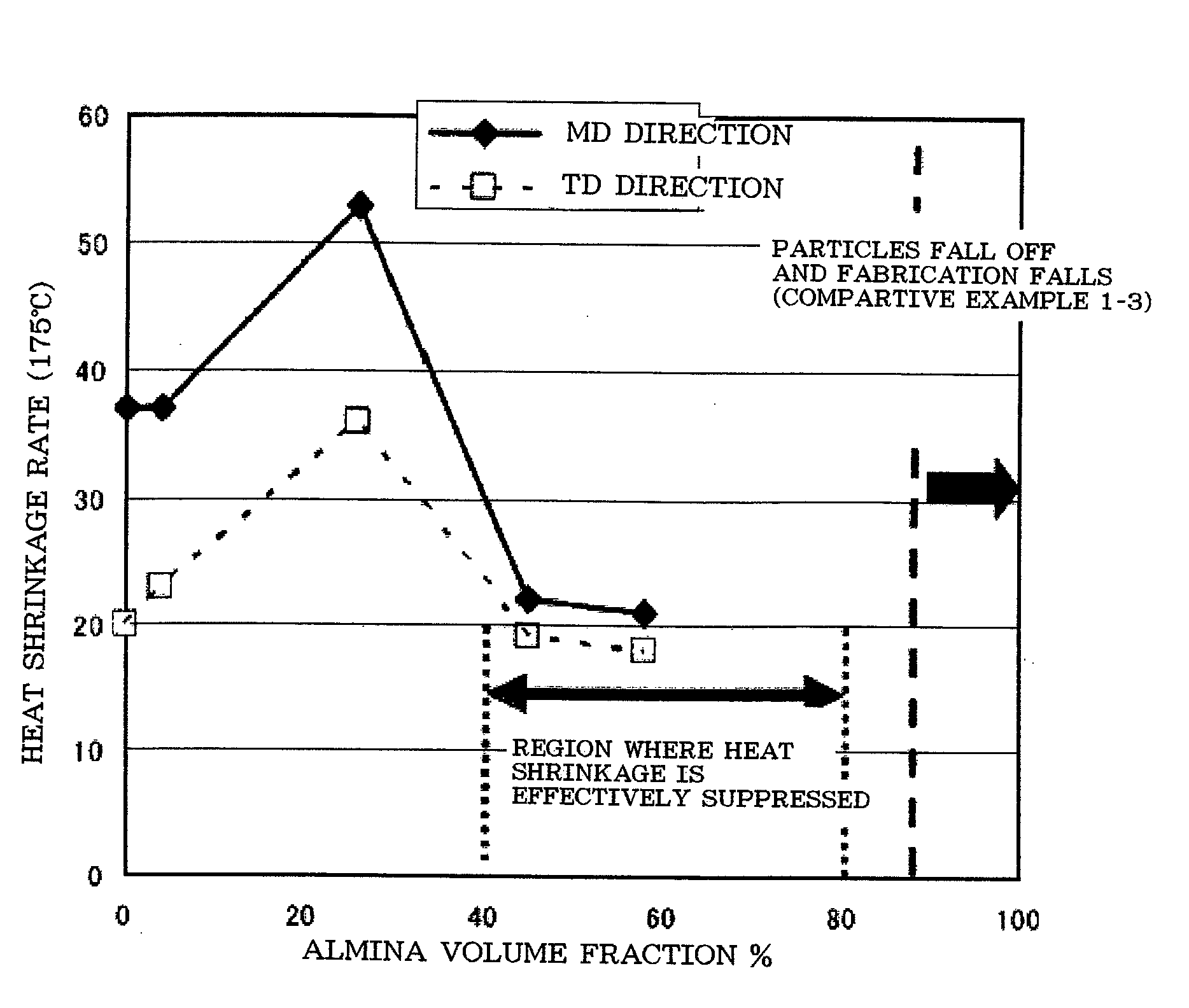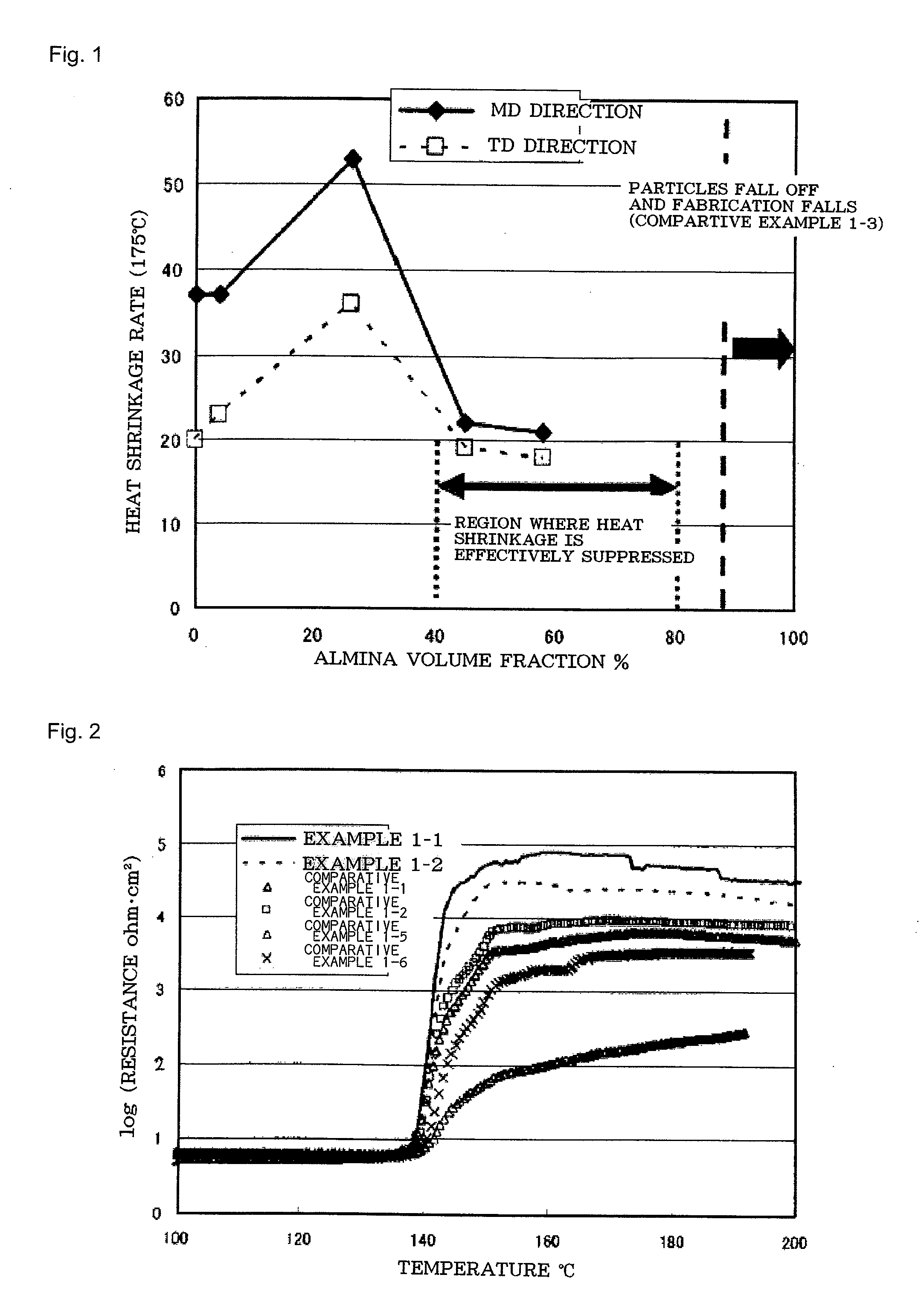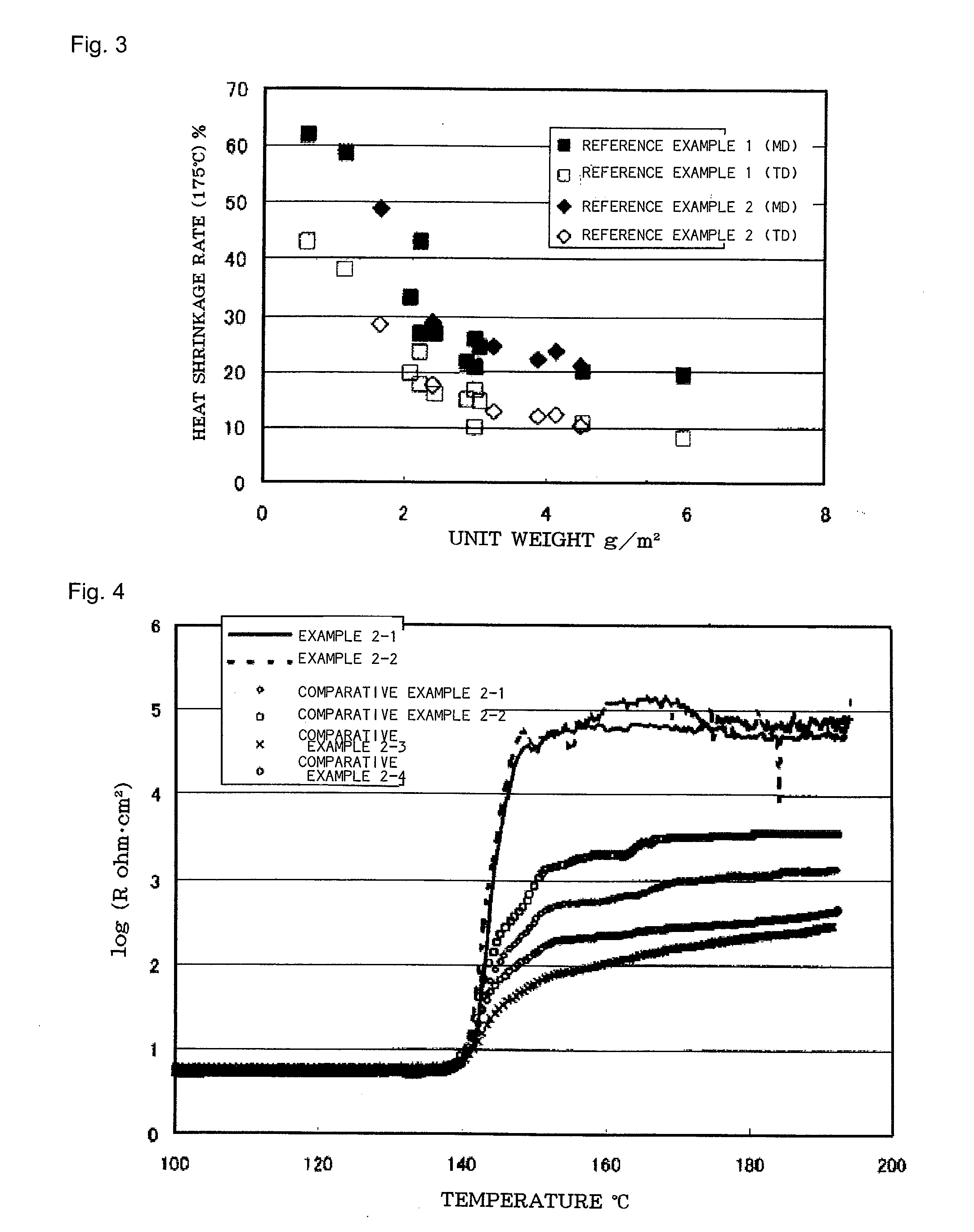Separator for non-aqueous secondary battery, process for producing same, and non-aqueous secondary battery
- Summary
- Abstract
- Description
- Claims
- Application Information
AI Technical Summary
Benefits of technology
Problems solved by technology
Method used
Image
Examples
example 1-1
[0158]A polyethylene microporous membrane was used that had a unit weight of 6.99 g / m2, a thickness of 11 μm, a Gurley number of 322 seconds (29.3 sec / 100 cc·μm), and a penetration strength of 443 g. The polyethylene microporous membrane had a weight average molecular weight of 1,270,000.
[0159]As the meta-type wholly aromatic polyamide, the poly-m-phenyleneisophthalamide Conex® (Teijin Techno Products Limited) was used. As the inorganic fine particles, α-alumina having an average particle diameter of 0.8 μm (Iwatani Kagaku Kogyo, SA-1) was used. The Conex and the alumina were adjusted to a weight ratio of 30:70 (volume ratio of 55:45), and the mixture was added to a 60:40 weight-ratio mixed solvent of dimethylacetoamide (DMAc) and tripropyleneglycol (TPG) so as to make the Conex content 6 weight %. The resultant mixture was obtained as the coating liquid.
[0160]Two Meyer bars were disposed opposite to each other, and an appropriate amount of the coating liquid was placed therebetween...
example 1-2
[0169]The same polyethylene microporous membrane, meta-type wholly aromatic polyamide, and inorganic fine particles of Example 1-1 were used.
[0170]The Conex and the alumina were adjusted to a weight ratio of 20:80 (volume ratio of 42:58), and the mixture was added to a 60:40 weight-ratio mixed solvent of dimethylacetoamide (DMAc) and tripropyleneglycol (TPG) so as to make the Conex content 6 weight %. The resultant mixture was obtained as the coating liquid.
[0171]Two Meyer bars were disposed opposite to each other, and an appropriate amount of the coating liquid was placed therebetween. The polyethylene microporous membrane was passed between the Meyer bars holding the coating liquid, so as to apply the coating liquid on the both surfaces of the polyethylene microporous membrane. Here, the clearance between the Meyer bars was adjusted to 30 μm, and the both Meyer bars were of size 6. The polyethylene microporous membrane was immersed in a solidifying liquid at 40° C. (water:mixed so...
example 1-3
[0180]The same polyethylene microporous membrane and meta-type wholly aromatic polyamide of Example 1-1 were used.
[0181]As the inorganic fine particles, α-alumina having an average particle diameter of 0.8 μm (Showa Denko, AL160 SG-3) was used. The Conex and the alumina were adjusted to a weight ratio of 15:85 (volume ratio of 34:66), and the mixture was added to a 50:50 weight-ratio mixed solvent of dimethylacetoamide (DMAc) and tripropyleneglycol (TPG) so as to make the Conex content 5.5 weight %. The resultant mixture was obtained as the coating liquid.
[0182]Two Meyer bars were disposed opposite to each other. The clearance between the Meyer bars was adjusted to 30 μm, and the both Meyer bars were of size 6. The polyethylene microporous membrane was passed between the Meyer bars by drawing it while supplying the coating liquid from the both sides of the Meyer bars, so as to apply the coating liquid on the both surfaces of the polyethylene microporous membrane. Then, the polyethyl...
PUM
| Property | Measurement | Unit |
|---|---|---|
| Temperature | aaaaa | aaaaa |
| Length | aaaaa | aaaaa |
| Length | aaaaa | aaaaa |
Abstract
Description
Claims
Application Information
 Login to View More
Login to View More - R&D
- Intellectual Property
- Life Sciences
- Materials
- Tech Scout
- Unparalleled Data Quality
- Higher Quality Content
- 60% Fewer Hallucinations
Browse by: Latest US Patents, China's latest patents, Technical Efficacy Thesaurus, Application Domain, Technology Topic, Popular Technical Reports.
© 2025 PatSnap. All rights reserved.Legal|Privacy policy|Modern Slavery Act Transparency Statement|Sitemap|About US| Contact US: help@patsnap.com



